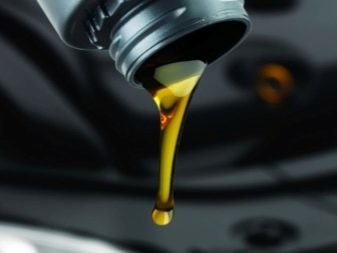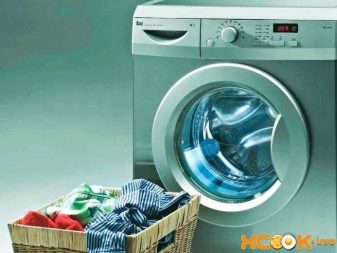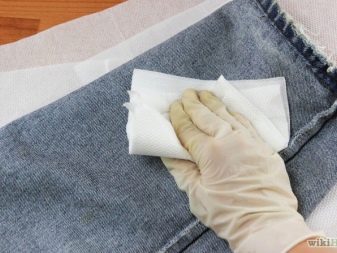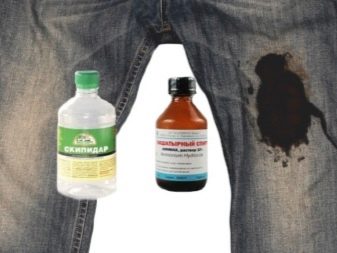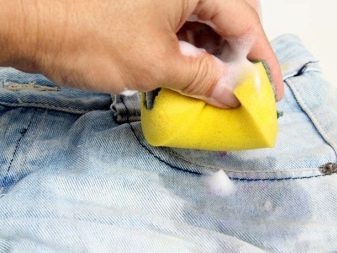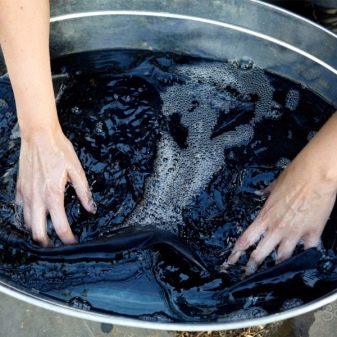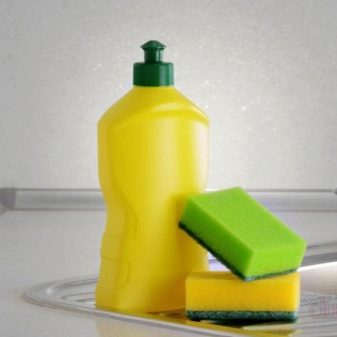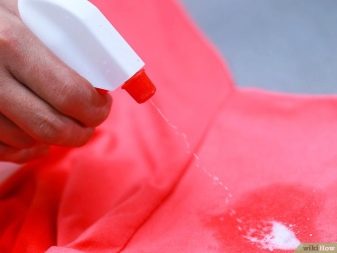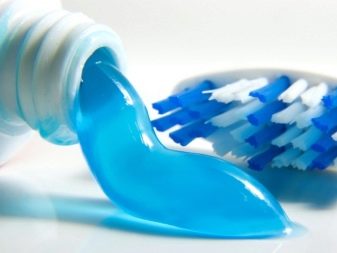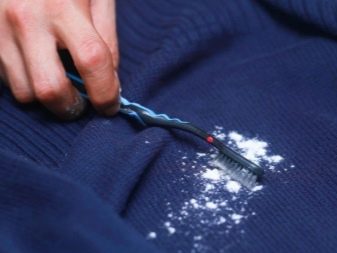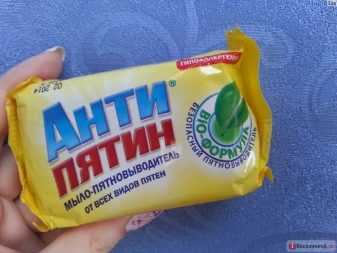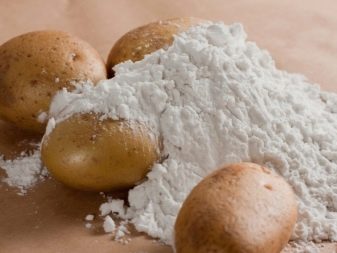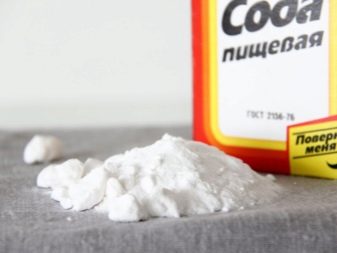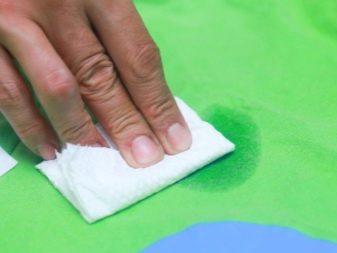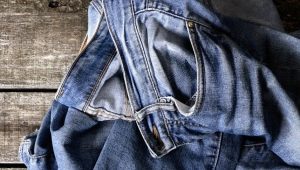Recommendations and methods for removing engine oil from clothes

Machine oil is widely used to reduce friction in vehicles, industrial machines, power equipment and other equipment. Along with the beneficial effect, if you get on clothes, any kind of engine oil leaves ugly stains. Anyone can encounter this problem and it is useful to know exactly how it is solved.
What are the spots?
All motor oils in their chemical nature and properties (in the parts of interest to us) are close to fats. But their diversity does not allow to consider the emerging pollution as something fundamentally uniform. So, the oil originally poured into the engines of automobiles is called fat in the professional circle. After a certain period of operation, being under the action of high temperatures, being oxidized by oxygen and taking on mechanical effects, the oil turns into waste.
Chemical changes in the composition of the lubricant reagent, radically change its practical properties. But in terms of pollution and its removal of special differences does not happen, and you can use the same tools.
It is only necessary to take into account what the fabric is and how long the stain has appeared; Depending on this, a suitable cleaning method is selected using the means available to you.
Features cleaning materials
Depending on the density and type of material, the intensity of pollution, the color of the product and other parameters, There are different cleaning methods:
- Cleaning jeans and jackets (down jacket) is complicated by the fact that their structure is very dense. Lubricating oil is almost impossible to remove the usual washing powders, bleach can completely ruin the thing with careless use. These items of clothing when cleaning with a brush can be thinned and also lose their properties. Since the fabric is dense, the absorption of liquids occurs slowly. This means that stains that look fresh are covered (without rubbing!) With dishes, then they remove dirt with cloth napkins and wash clothes as usual.
- From improvised means to remove the oil from the surface of the jackets helps dry mustard. It is soaked to make something like a pap, put on a dirty place for 30 minutes, then rinse the dirty thing in warm water. Even thick clothes can be cleaned with kerosene, which is poured onto the surface of the stain and after a few seconds, they start pushing towards the center of the pollution.
With this method, you will need to remove the stains by washing in the hottest water possible, and if the fabric does not withstand such treatment, it will have to be abandoned.
- Jeans are affected by oil more often than any other matter, and it is very difficult to remove such stains. It is recommended to start the treatment with the application of a solvent, and it is impossible to rub it strongly, otherwise the surface will fade. Then the jeans are sprinkled with laundry detergent, sprayed with water and rubbed with a brush (vigorously, since we can’t get rid of the weak movements from the streaks). Special sprays can also drive out oil contamination from jeans, but only if the stain is not old.
- The most energetic product that fits jeans, but is absolutely not suitable for bolonovy fabric - a combination of ammonia and turpentine. Be prepared for the fact that the thing can deteriorate irrevocably! If you still want to take a chance, apply the mixture on the blockage and clean it with a soft cloth. Then you will need several hand washes with a change of soap solution. Even with full success, a stable unpleasant smell can remain.
- It should be noted that jeans and outerwear can not be cleared of oil in all cases. So, the most delicate materials with the necessary processing simply collapse, lose their appearance. The most versatile reagent is gasoline for cigarette lighters, which impregnate a pair of napkins applied from different sides. After 30 minutes, the oil will remain only on a napkin.
The classic blue color of jeans means that you can not use a solvent at all; dark grades of fabric can be processed repeatedly, only carefully watching the color of the matter.
- With white or very light pants, oil stains are removed by treatment with oxygen bleach. Given their great activity, strictly follow the instructions, and if the applied tool does not help, do not try to experiment further, contact the professionals. When cleaning the bolonyev fabric, the inside of the stain should lie on a board or hard cardboard. When rubbing the surface of the dirt, never press it excessively.
- Bologna can be washed only at temperatures not higher than 40 degrees, and manually, and it should be wrung out more carefully. Ironing after cleaning such clothes is unacceptable, it is only dried at room temperature away from sunlight and heating appliances. It is better not to brush bologna with brushes; as a last resort, use the least hard ones and clean them smoothly.
Necessary accessories
To clean clothes, you should have both brushes and napkins ready. What exactly to apply depends on the properties of the fabric. You will also need soap, hot or warm water, which will help remove stains or residual contamination. In many cases, the clothes have to be additionally washed by hand or in the car, so the powder should also be on hand. Good means for removing fat stains - kerosene, gasoline, 646th solvent and varnish removers, which recipe includes acetone.
In addition to all the above, prepare cotton pads (tampons), soaking container, sponges, they can be useful at any time.
Preparatory work
When preparing to smudge, take care to protect yourself. All active remedies of any kind need only be used with rubber gloves, and the most powerful reagents and mixtures can harm respiratory organs. Carefully read the instructions for the drug or reviews on the use of handicrafts before proceeding to work. Make sure that this type of fabric can be processed in a certain way. Finally, strictly follow the technical rulesotherwise, instead of removing the stain, you can wash it over a larger area or transfer it to other clothes.
Using a tool that you have not tried before or trying to clean a new thing, first check the effect of the reagent on a similar tissue sample or on a visually invisible area. If everything goes well, you can act.
How can I wash?
Some useful recommendations:
- You can wash things with a car spray, it should be used strictly according to the instructions, and then the dirt will be removed almost immediately. Such a tool effectively fights even with deeply penetrated pollution. Since such a spray is not in all homes, you can use dishwashing detergent instead. But they are able to cope only with fresh engine oil and the fabric needs to be impregnated for 4 or 5 hours.
- Enhance the effect of adding to the dish detergent any washing powder. If you are looking for something to scrub away the stain from engine oil, there is a special soap for this. In it, the problematic thing is washed in warm water and left for ½ hour. Then fix the result, washing clothes in the car according to the usual program.
- To remove the engine oil in the absence of both dishware and powder, toothpaste is capable of: rub it with soiled clothes and then carry out the usual machine wash.You can use other means of uniform composition: coarse fabrics are easily cleaned with solvents from paints, after applying which, the stains are thoroughly wiped with a stiff brush. Completes processing all the same washing.
- In many cases, clean turpentine helps well, without any impurities: it is dripped onto the stain in a small amount, then rubbed thoroughly, clothes are washed and ventilated. You can remove the lube that has just got on the fabric like this: remove the liquid part of the contamination with a napkin or towel, pour a small amount of dishware onto the stain, then, after 20 minutes or a little more, use a brush. It remains only to wash the clothes in the usual mode of washing for her.
- If there are fears that it will not be possible to wipe off the stain (this happens when the same turpentine and other strong means are not applicable), it remains to use the most benign methods. In particular, sprinkle oily contamination with talcum powder, cornstarch or baby powder. After applying such a layer of clothing must be left alone for the night or day. Then the powder particles whisk, the thing is washed up in warm water without additional reagents.
- If you need a quicker effect, sprinkle chalk on the stain, it works in 1-2 minutes. True, you will need to wash clothes so that there are no white stains left.
- When there is no desire to experiment with various artisanal means, and you want to achieve the optimal effect, you should use synthetic stain removers. It is quite reliable and safe way. A decent substitute for soap can serve as "Antipyatin." The dirty area is rubbed with a special soap and left for 15 or 20 minutes, after which the fabric is manually washed in a solution of the same product.
Removing the residual smell of this excellent product is easy: rinse the item in the washing machine, be sure to add a small portion of the fabric softener.
Tips
A few tips to note hostesses:
- When there is no opportunity or time to use complex compositions, to carry out wet processing, just pour the stain with table salt: in a few minutes it should disappear. Ironing a cloth with two napkins on both sides also helps to do without chemical treatment with improvised or industrial means.
- Acetate fabric, silk, velvet and wool products are recommended to be cleaned with a mixture of turpentine and ammonia or denatured alcohol (they are taken equally). The solution is collected with a cotton swab and rubbed in a contaminated place. Very fresh stains are removed by scattering chalk and starch, but to fix the result (bulk materials only absorb liquid), you have to wash. If there is magnesium powder and ether at home, they are mixed until homogeneous, the dirty place is soaked with gruel and gently, without sudden movements, is rubbed into the stain.
- We recommend never to apply "Whiteness" and not soak oiled clothing; Both described methods are useless, and the first is also dangerous. Whenever you are working with lubricants, repair the car, or simply drive it somewhere, it is better to immediately inspect all the clothes and personal items in order to quickly detect the stain.
Using solvents, do not forget to put napkins under the stains, and as you get wet with the oil flowing out, change them immediately. White and colored clothes, as well as very thin or delicate fabrics, it is desirable to deliver to dry cleaning, you can hardly wash them off with your own hands. Using gasoline, kerosene or acetone, work as far as possible from gas stoves and hot objects!
- Cleaning with kerosene is very simple: the liquid is applied to dirty places, left for 10 minutes, after which the remaining product is collected with a paper napkin, the item is washed. Any solvents and turpentine can be used only until the expiration date. Be careful with the processing of fine, colored matter, as well as the one that is decorated with beads or embroidery.In such cases, not only potent substances are contraindicated, even washing in hot water is not recommended.
- To cleanse the fabric of lubricants colored chalk does not fit, you need to use only pure white chalk. They generously fall asleep the affected areas and wait up to 5 minutes for the liquid to be absorbed by the powder. Then chalk shake off.
- Food or caustic soda can both absorb machine oils and dissolve them. To achieve an optimal effect, the reagent is kept for six hours. But they do not disregard it, periodically it is necessary to change the planted napkins, otherwise the oil will spread where it is not necessary. For absorption of liquid on the surface, ordinary sawdust will work well.
At home, as you can easily see, you can cope with a variety of pollution. It is only necessary to know the simplest ways and how to act undesirable.
How to remove stains from engine oil, see the following video.

